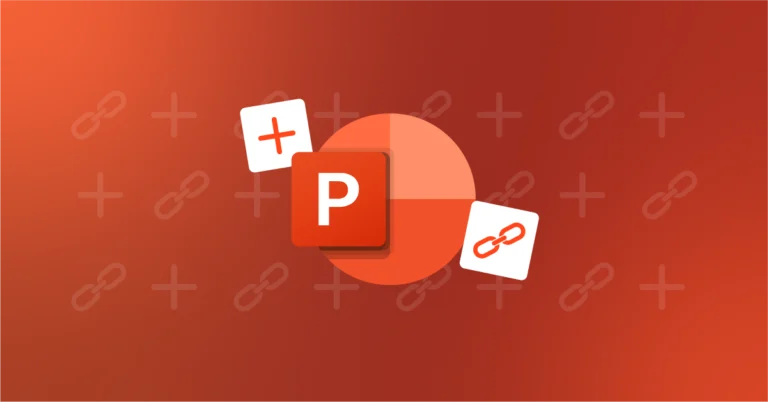Content is at the core of your business. It’s how your teams highlight your values, underline your mission, sell your products or services, and build rapport with your clients and prospects. But how can you empower front-line teams to deliver winning, on-brand documents consistently?
The answer: an effective content enablement strategy.
In this comprehensive guide, we’ll explore all aspects of content enablement, unveiling its potential to drive business growth and break down walls between departments. If you’re looking to unlock efficiency within your teams’ content workflows, then this article is for you.
What is content enablement?
To put it simply, content enablement is the practice of delivering high-quality corporate content throughout your sales cycle to aid business growth.
There are two core pillars within content enablement:
- Creation: producing valuable content that aligns with your brand’s messaging and graphic charter.
- Curation: ensuring that winning content is easily accessible to all teams across your business, particularly sales and consulting teams.
When integrated optimally within a business’s framework, content enablement facilitates streamlined workflows and better output.
How to build a successful content enablement strategy
A winning content enablement strategy revolves around four key stages: planning, creation, storage and optimization.
Here is a comprehensive breakdown of these critical building blocks:
Content planning
It’s important to meticulously plan your content enablement strategy to ensure you consider everything front-line teams may need for commercial success. Use this time to establish how teams feel about your existing content and uncover any content gaps.
Here are some useful steps during this phase:
- Build core objectives for each different content type; for example, setting different goals for your pitchbook templates vs. monthly reporting template.
- Identify your audience’s unique needs; for example, whether you need to factor in accessibility requirements into your content.
- Consider the channels for distribution; for example, whether your team/clients will predominantly read the documents in Microsoft 365 or other applications.
Don’t forget, collaboration is key; you should consult various teams throughout this planning stage to shape your content enablement strategy effectively.
Content creation
The next step is building best practice, on-brand templates to embed into the content enablement software.
Some tools offer features to help you when creating the gold standard materials, for example:
- Automated formatting features in PowerPoint, enabling you to apply your company branding to charts, tables, shapes and bullet points in one click.
- Functionality to audit and fix all easily missed errors within the templates, such as incorrect fonts and misaligned objects.
The real cherry on top is providing your teams with access to features that optimize their content creation workflows, transforming everyone in the business into a brand ambassador.

Teams are now producing brand compliant, homogeneous documents, whilst still maintaining the freedom to customize their content within clear parameters.

Jenna Gadhavi
National Marketing and Communication Senior Marketer
Content storage
After creating impactful, winning materials, whoever manages content within the business (usually marketing teams) must store it effectively so it’s easily accessible.
We recommend leveraging content enablement tools to manage all corporate materials via a centralized repository. Not only does this make managing content as easy as possible for marketing teams – it also enables teams to access content quickly via their most-used applications (like PowerPoint, Excel and Word).
Investing in efficient content management software, like UpSlide, will save valuable time for both marketing and sales teams, streamlining document creation across the entire business.
Discover how content management software works >
Content optimization
A successful content lifecycle doesn’t end once the material is published. You must constantly question, test, and improve the content so that it remains best practice and relevant for your teams.
Some content enablement tools enable client-facing teams to provide feedback via PowerPoint to ensure content remains optimal.
For example, your reporting team might notice some misalignments in your quarterly report template and could leave suggestions directly on the document within PowerPoint.
Then, the content administrator can choose whether to issue the suggested changes to teams within seconds, enabling everyone in the business to access their best-quality content.
Benefits of implementing a content enablement strategy
Deploying a robust content enablement strategy within your organization can bring multiple benefits.
Here are a few:

Winning more business
Effective content enablement will ensure all client-facing deliverables, such as proposals and pitches, are optimized for maximum impact. This will ultimately help teams build credibility with documents that aid business growth.
Eliminating inefficiencies
Earlier this year, Microsoft surveyed a number of professionals and found that 62% spend too much time searching for information in their workday. Content enablement software can eliminate these inefficiencies and free up time to work on more important work.
Strengthening brand identity
With a content enablement strategy, you can say goodbye to teams sending off-brand, out-of-date materials to clients and prospects. Content enablement ensures teams build on-brand, homogenous documents, regardless of department or geography.
Boosting global collaboration
A well-structured content enablement strategy bridges the divide between teams by enabling easy content sharing and joint goal setting.
Implementing a content enablement strategy can effectively tackle potential roadblocks that stand between your business and its desired targets.
How to choose the right content enablement tool
There are many content enablement tools on the market, some specific to different office suites (for example, UpSlide optimizing Microsoft 365) and others tailored for particular use cases (such as using WordPress for website content management).
Before investing in a content enablement tool, we recommend conducting an internal investigation to define your selection criteria and expectations.
Step one: assess current content processes and workflows
Begin by taking stock of your existing content processes and workflows, which includes evaluating how your teams create, manage, distribute and use content.
- Identify who is responsible for creating content (typically your marketing team).
- Look at how this content is stored and accessed.
- Evaluate if there are any bottlenecks or challenges when it comes to distributing and using this content across the business.
- Understand which teams regularly distribute content to clients or prospects.
This assessment will provide you with the valuable insights needed to formulate your selection criteria to evaluate software against.
Step two: analyze the content enablement tools on the market
Identify the different content enablement tools on the market using comparison sites like G2, Capterra, GetApp. Alternatively, speak to your team directly to hear about the tools they’re aware of already or that your peers are using.
Screen different solutions against your selection criteria, questioning:
- Which features are included?
- How user-friendly is the software?
- How much does it cost?
- Which third-party applications does the tool integrate with?
- Does the company have a proven track record of implementing software for businesses like yours?
Once you’ve compared each tool on the market with this selection criteria, you’ll be able to work out which content enablement software will be the most appropriate for your team.
Step three: test and adapt the strategy
Before embarking on a company-wide rollout, consider running a pilot test with a handful of teams to test the compatibility of the tool.
After six months, assess:
- How quickly have teams been able to adopt the tool?
- Has it solved the initial bottleneck issues pinpointed during the assessment stage?
- Have your teams reported qualitative or quantitative success, for example, time-savings during the content creation process or feedback from their clients?
If the results aren’t what you were hoping for initially, reach out to your dedicated customer success managers or implementation specialists to help you ensure adoption. If it’s still not successful, then maybe it’s time to consider another tool or strategy.
Once all the kinks are smoothed, it’s then prime time to roll it out company wide.
Case studies: successful implementations of content enablement strategies
Many innovative businesses are using content enablement to achieve their strategic objectives. Here are a few examples:
Clarksons
The marketing team at global shipping firm, Clarksons, used to spend hours ensuring that all client-facing documents were brand compliant.
They implemented content management software to give employees the tools to achieve brand consistency independently, saving each user over 21 hours a month.
Singer Capital Markets
Investment banking boutique, Singer Capital Markets, had a big problem maintaining brand consistency across their client-facing materials. Pitch decks varied across teams, making it challenging for the marketing team to ensure homogeneity.
They started using a content enablement tool to help their teams produce high-quality, branded documents faster, and since then have seen great success.

UpSlide is by far the best software that we’ve experienced; not only is it so user-friendly, but the sophistication of the software is far beyond what we’ve come across previously. It’s refreshing to use features that are so bespoke to financial services.

Joanna Osborne
Head of Marketing
Moving forward
As we look towards the future, businesses need to constantly adapt and evolve constantly with the market shifts to stay competitive.
Establishing a content enablement strategy will enable companies to provide their teams with the necessary tools to generate high-quality documents – ultimately facilitating business growth and credibility.
If you’d like to hear more about how to maximize efficiencies with technology, bookmark our Knowledge Hub, or follow us on LinkedIn.









